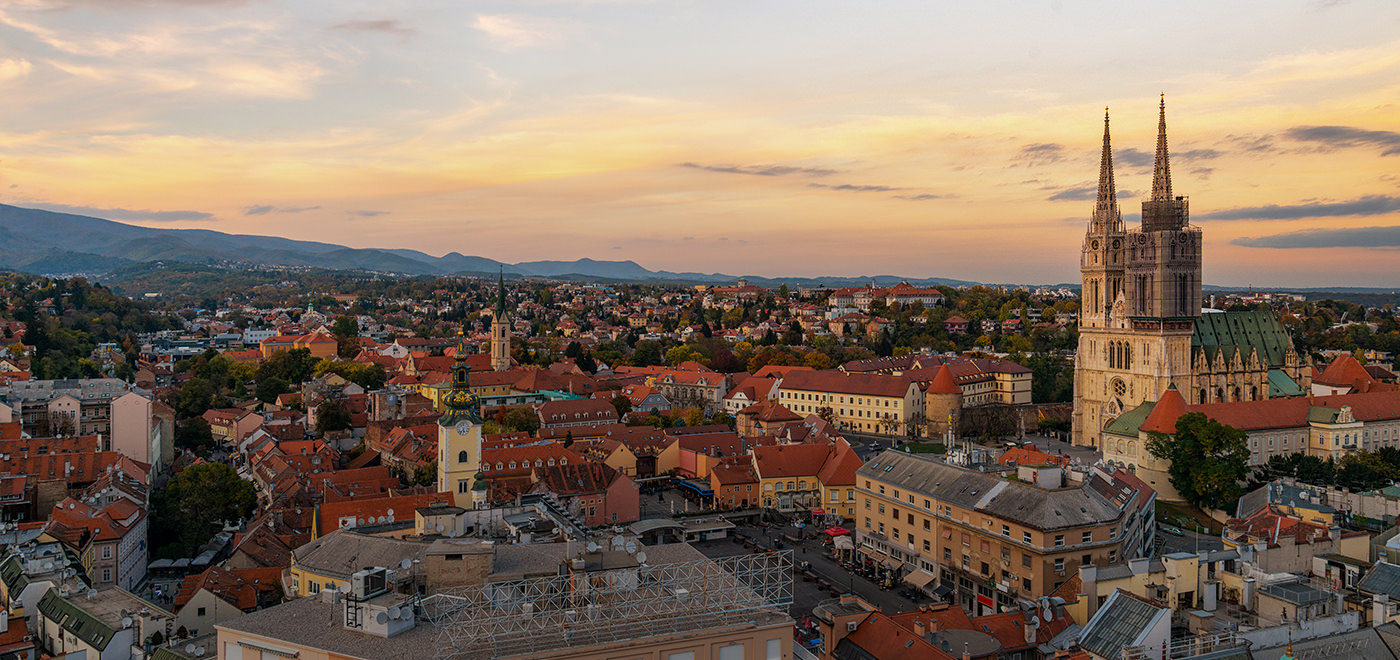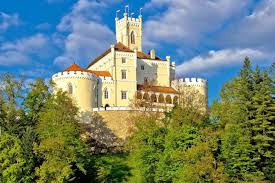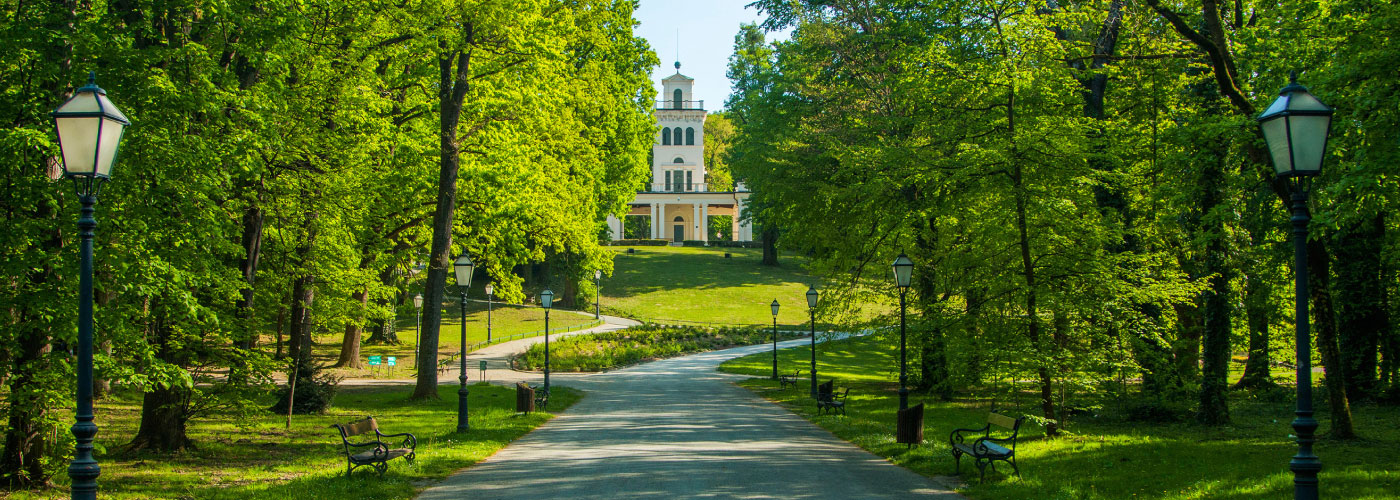| Day |
Plan |
Overnight |
| Day 1 |
Land in Zagreb |
Zagreb |
|
Day 1
|
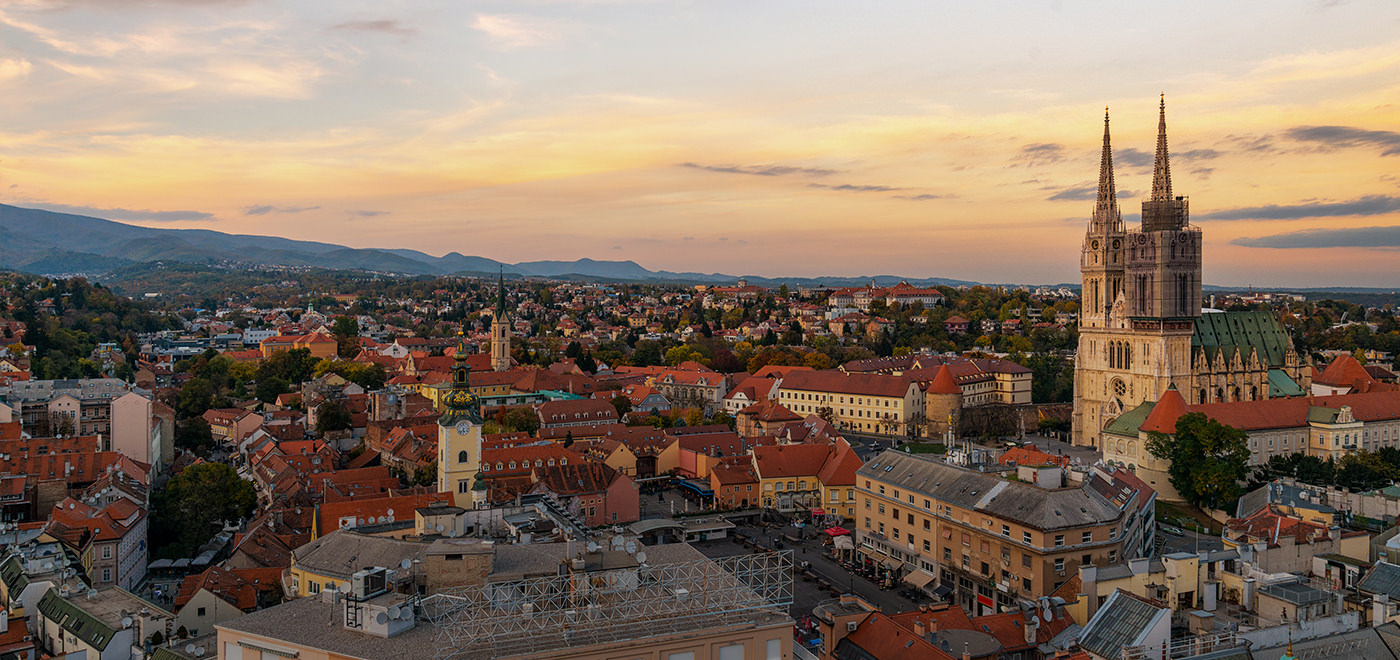
Land in Zagreb, and proceed to your hotel, check in and do local sightseeing or you can choose to visit the Trakoscan Castle straight from the airport before you check in to your hotel (an hour's journey from the Airport to The Castle), but note, the entry into the castle shuts by 4 pm, so plan your visit accordingly.
Trakoscan Castle:
Set against a backdrop of hillside vineyards and lush woodlands in Zagorje, just an hour north of Zagreb, Trakošćan Castle is Croatia's best preserved and most-visited medieval castle, making it a popular day trip from the capital. The grand Gothic fortress dates back to the 13th century, but much of its current appearance is owed to mid-19th century - Viator.
Zagreb local sightseeing:
Check in to your hotel, freshen up and proceed to visit some of the best local sights and landmark places in the capital city of Croatia.
St Mark's Church
Cathedral of Zagreb
Museum of Broken Relationships
Maksimir Park
|
|
| Day 2 |
Head to Rovinj, stopping at Hum and Motovun en route |
Rovinj |
|
Day 2
|
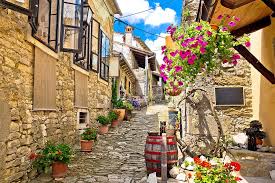
Check out early from Zagreb and drive towards Rovinj, making a pit stop at two very endearing small towns called Hum and Motovun.
Hum:
The self-proclaimed 'world's smallest town' is a mere speck on the map, consisting of basically one street that loops around within its historic walls. Yet, in terms of atmosphere, it's huge. Legend has it that the giants who built Istria had only a few stones left over and they used them to build Hum - Lonely Planet. With a population of under 50 people, this place is so intimate and wondrous at the same time!
PS - do not forget to buy some of the local produce, especially anything with truffles!
Motovun:
Motovun (Montona in Italian) is a captivating little walled town perched on a 277m hill in the Mirna River valley. The setting is astonishingly gorgeous and a large part of its appeal is in the lost-in-time views over the verdant valley, with the town rising above it like something from a fairy tale. The damp, dark Motovun Forest at its base also has a mythical quality, especially as it contains hidden treasure in the form of Istria's famous truffles.
|
|
| Day 3 |
Full day sightseeing at Rovinj |
Rovinj |
|
Day 3
|

Situated on the west coast of Istria, Rovinj is one of the most popular and most developed tourist resorts in Croatia. Known as one of the most picturesque and romantic towns on Mediterranean, over the last few decades Rovinj attracts a large number of tourists, most of them faithfully returning year after year. And what brings them back, you ask? The mild Mediterranean climate, the old town's narrow cobbled paths, carefully designed parks, the tidiness of the streets, friendly locals and breathtaking sunset views.
Here's a list of places to see at Rovinj: Church of St. Euphemia, Sveta Katarina, Cisterna Beach, Rovinj Aquarium, Town walls and gates, Titos' Square
|
|
| Day 4 |
Drive to Plitvice National Park |
Plitvice |
|
Day 4
|

Check out early from Rovinj and drive to Plitvice National Park. Check in to your accommodation and head towards the park for a full day tour at your own pace.
The Plitvice Lakes National Park, Croatia’s most popular tourist attraction, was granted UNESCO World Heritage status in 1979. The beauty of the National Park lies in its sixteen lakes, inter-connected by a series of waterfalls, and set in deep woodland populated by deer, bears, wolves, boars and rare bird species. The National Park covers a total area of 300 square kilometres, whilst the lakes join together over a distance of eight kilometres.
|
|
| Day 5 |
Full day sightseeing at Zadar |
Zadar |
|
Day 5
|
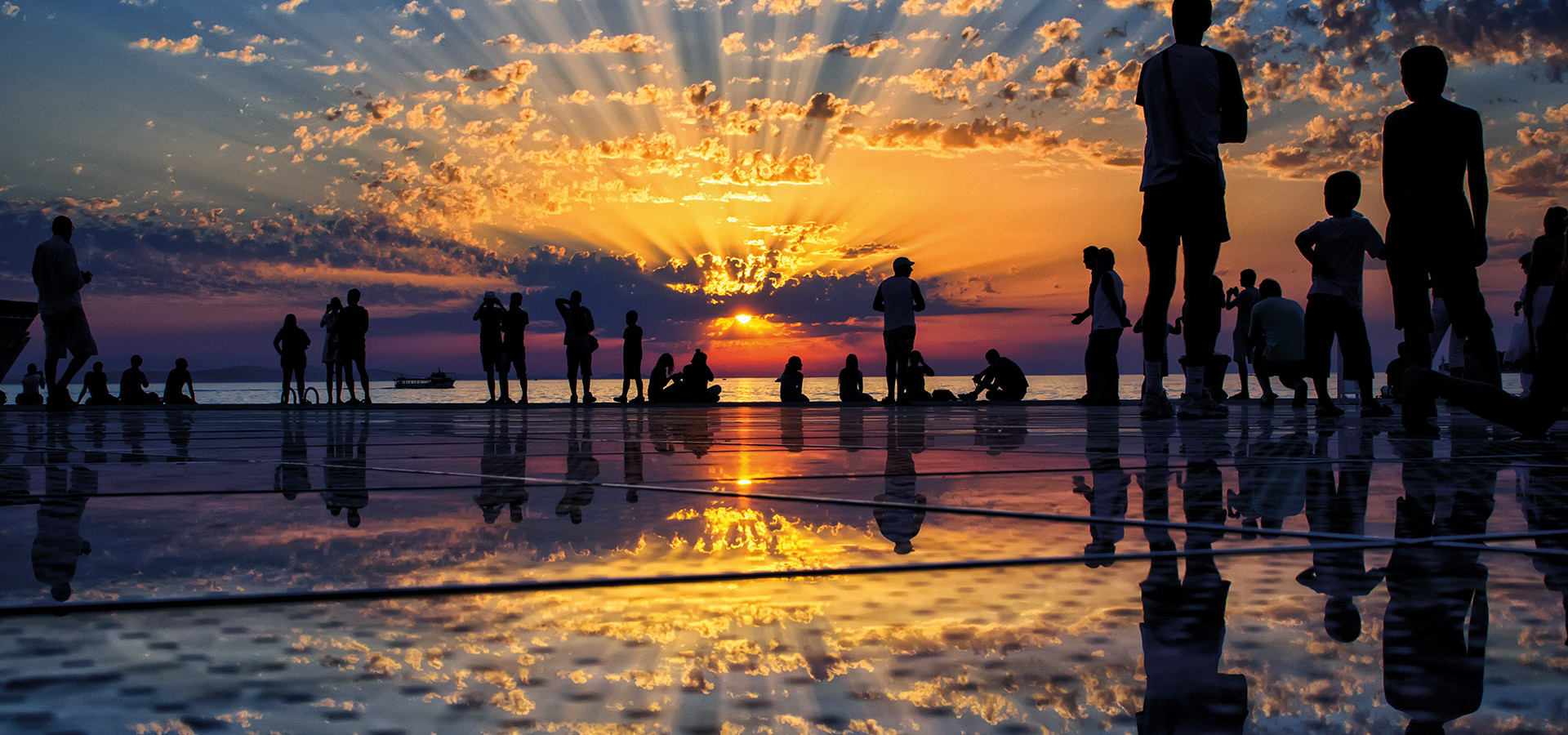
Check out early from Plitvice and drive towards Zadar and spend the day doing local sightseeing.
Zadar, a city on Croatia’s Dalmatian coast, is known for the Roman and Venetian ruins of its peninsular Old Town, has exceptional history and rich cultural heritage.
The film director and master of suspense, Alfred Hitchcock, was reputedly drawn to the city to witness the spectacular reddening of its skies in 1964. He apparently described it as “the most beautiful sunset in the world”. To celebrate such magnificent sunsets, an artist, Nikola Basic, decided to build what is called the “Monument to the Sun” (or Greetings to the Sun) on the edge of the Zadar waterfront. All day a 22-metre disc, supposed to represent the sun, soaks up solar rays only to dazzle people with them in the form of coloured light patterns as night falls. Smaller discs representing other planets in the solar system also radiate their own rainbow glow. At the same time, the revamped Monument to the Sun will connect up to Zadar’s other bonkers attraction, its Sea Organ. This is an adjacent art installation, formed by cleverly cutting steps into a section of the concrete waterfront promenade. These have underwater pipes in them that sound musical notes when filled with water - and create a harmonica effect that sounds as if each wave is gently sighing.
Other sights: Crkva Sv. Donata, Cathedral of St. Anastasia, People's Square
|
|
| Day 6 |
Krka National Park, en route to Split |
Split |
|
Day 6
|

Check out from Zadar and drive towards Split, stopping at Krka National Park on the way. Krka National Park lies about 10km inland from Sibenik in this part of Dalmatia. Named after the Krka River, the Park covers an area of just over 142 square km and includes two thirds of the river itself. The top attraction of the Park are its magnificent waterfalls, including the famous Skradinski Buk falls which are one of Croatia’s most famous sights.
Other highlights include the small island of Visovac and Roski Slap waterfall. A boat trip through the park (included in the entrance ticket) is a great way of seeing much of the Park.
Best of all, it is possible to swim in some locations in Krka National Park!
Head to Split after that. Croatia's second-largest city, Split is a great place to see Dalmatian life as it’s really lived. Always buzzing, this exuberant city has just the right balance between tradition and modernity, with dozens of bars, restaurants and shops thriving amid the atmospheric old walls.
Head to Diocletian's Palace, Saint Dominus Cathedral and Riva for an evening at leisure.
|
|
| Day 7 |
Spend the day doing local sightseeing in Split |
Split |
|
Day 7
|

Today, you will visit the top sights of Split and include some of the places listed on the itinerary yesterday inase you missed it!
Jupiter's Temple, Marjan Forest Park, Republic Square and end the day walking through the Riva again and enjoying the sights and sounds of the many cafes, bars and shops humming and thriving along the promende.
|
|
| Day 8 |
Ferry to Brac Island |
Brac |
|
Day 8
|
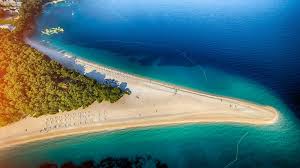
Check out and head to the port catch your ferry to Brac Island. Spend rest of the day visiting Zlatni Rat and evening at leisure.
Brač is a Croatian island in the Adriatic Sea. It's best known for the white-pebble beach Zlatni Rat (Golden Cape), a favored windsurfing site outside the resort town of Bol. Supetar, the island's main town, offers a horseshoe-shaped beach and ferries to and from Split. Seaside Pučišća features traditional architecture and an active quarry for the island's famous white limestone.
|
|
| Day 9 |
Spend the day beach hopping on Brac! |
Brac |
|
Day 9
|
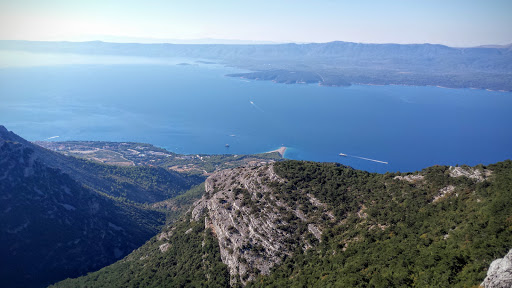
Spend the day beach hopping, and the ones you simply cannot miss: Martinica /Blaca Cove/Mala Luka.
Also, make sure you visit Vidova Gora, the highest peak on all Adriatic Islands. Vidova Gora on the island of Brač is the highest mountain and one of the most beautiful viewpoints of the Adriatic. It has a shape of an elongated karst ridge stretching along the southern coast of Brač.
The ascent to Vidova Gora is a wonderful supplement to any tourist visit to the island of Brač. The main access to Vidova Gora is a paved road beginning at the Kneževravan highland, close to Nerežišće.
|
|
| Day 10 |
Ferry to Hvar |
Hvar |
|
Day 10
|

Check out from Brac and take the ferry to Hvar. This place is sure to steal your heart, if Croatia hasn't yet so far into the trip.
Hvar, a Croatian island in the Adriatic Sea, is best known as a summer resort. Highlights of the port town Hvar include its 13th-century walls, a hilltop fortress and a main square anchored by the Renaissance-era Hvar Cathedral. The island also features beaches such as Dubovica and inland lavender fields. Boat excursions serve the nearby Pakleni Islands, which have secluded beaches and coves.
Today, you're set to visit the Spanish Fortress (an elevated fortress accessible by car or scenic walk, with panoramic views of city, islands & sea). This fort built in the 16C and the most interesting part of the visit are the sinister dungeons and the view of the town and the Pakleni islands. The path climbing up the hill takes you past the gates to the old city.
|
|
| Day 11 |
Day to visit the Blue and Green Grotto |
Hvar |
|
Day 11
|

There are many things unique and beautiful of Hvar, but a certain speciality one should not visit is a tour of the Blue and Green Grotto, just a boat ride away from the main Island.
The Blue Grotto or Blue Cave, is a waterlogged sea cave located in a small bay in the Croatian Adriatic. The grotto is one of the best known natural beauty spots on the Adriatic and a popular show cave because of the glowing blue light that appears at certain times of day. Depending on the season, the ideal moment to visit the cave is between 11 AM and 12 noon.
Similarly, the Green Grotto or Green Cave is at a small distance from Blue Grotto, slightly bigger and the phenomenon makes it emit an emerald green tone.
Next up, a visit to Stiniva beach that winds up your tour for the day! Stiniva Beach, named one of the best in Europe, is a quaint, off-the-beaten-path beach known for its petite size, clear waters & sheltered atmosphere.
|
|
| Day 12 |
Day to visit Sveti Nikola and some vineyards and lavendar fields |
Hvar |
|
Day 12
|
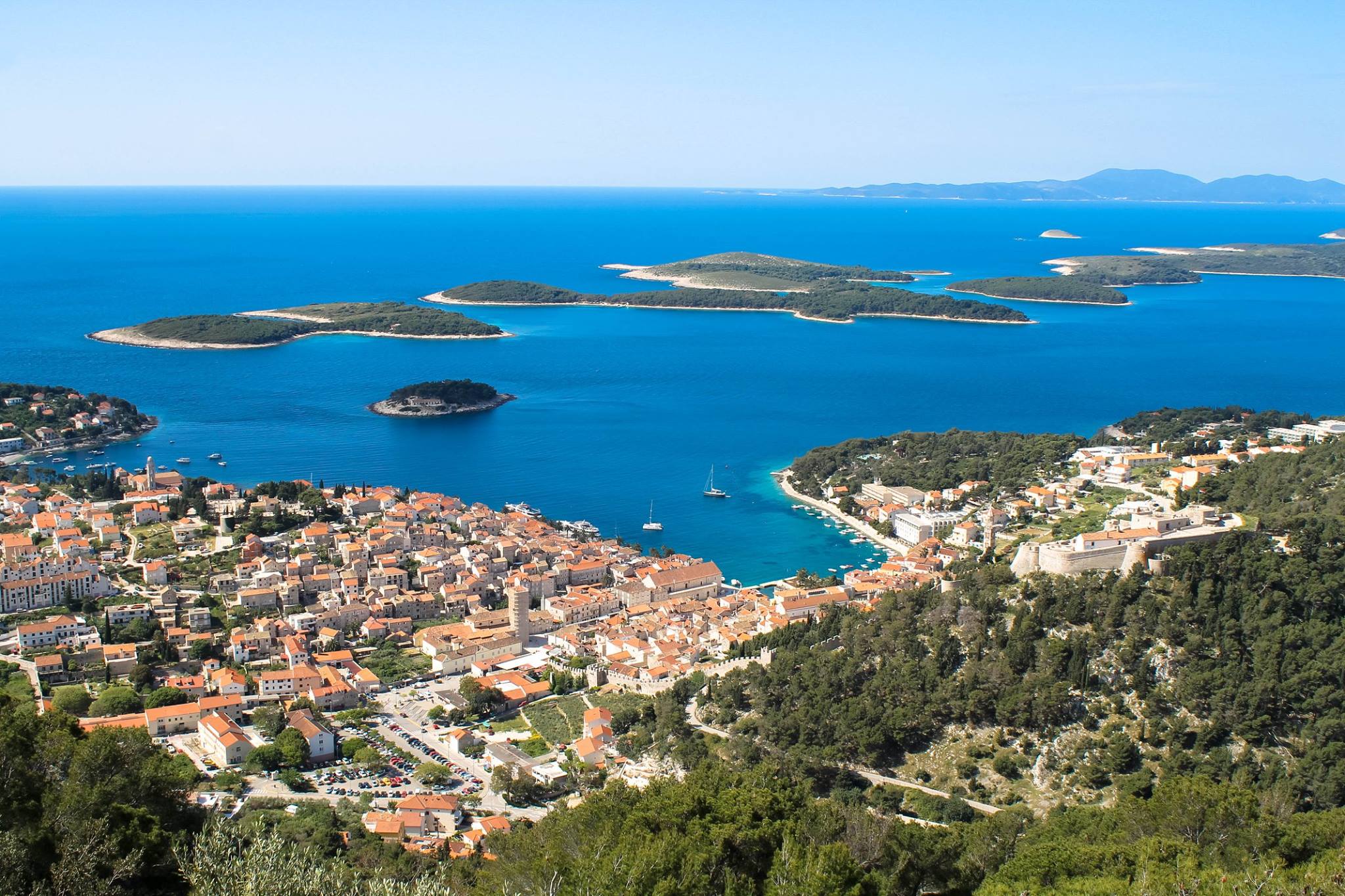
Sveti Nikola, the highest peak (628m) on the island offers an amazing trek up and breathtaking views from atop. On the very top, is the small charming Church of St. Nicholas whose existence was first recorded in 1495. The road to the top of the island is unpaved, but in very good condition, wending its way past lavender fields, old walled terraces and some newer olive groves. Don't miss to stop and breathe in the fragrance of the lavender fields and heady scent of wild rosemary along the pathway. As you head back down, you'll notice many family run vineyards, but make sure to stop at one and try their wines. Some of them sell their produce only at the vineyards.
Scattered along the lavender fields you will also see some stone rest houses, built for people to rest in while picking lavender and some of them age over 300 years.
It is said that the way they are built, it protects the people from the warmth and the cold in equal measures!
|
|
| Day 13 |
It's beach hoppin' day! |
Hvar |
|
Day 13
|

All that trekking calls for a day of beach hopping and the list of beaches you must hit are: Jelsa, Dubovica,Milna and Beach Palmizana.
All roads in Hvar lead to sparkling blue waters and you'll see it for yourself. While near Jelsa you can also make a pitstop at Vrboska - a settlement in the municipality of Jelsa and also stop at Stari Grad - Stari Grad (Old Town) a UNESCO world heritage sight, on the island’s north coast, is a more quiet, cultured and altogether sober affair than its stylish and stunning sister.
|
|
| Day 14 |
Head to Dubrovnik |
Dubrovnik |
|
Day 14
|
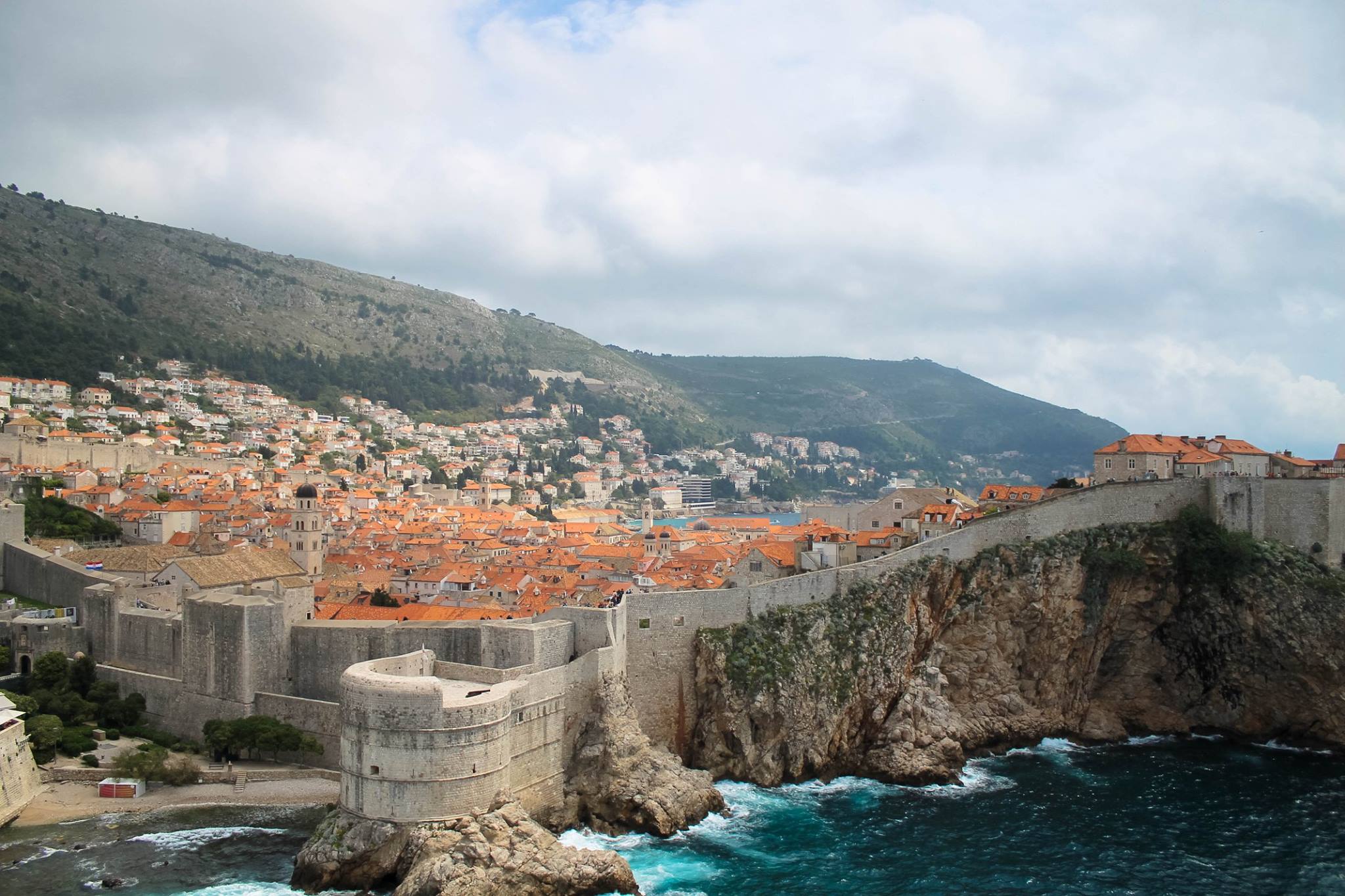
The last leg of your Croatian adventure and it ends with your stay at Dubrovnik. Regardless of whether you are visiting Dubrovnik for the first time or the hundredth, the sense of awe never fails to descend when you set eyes on the beauty of the old town.
Of course, in recent times, this city has topped the charts for top places to visit simply because it has offered some showstopping shoot locations for popular TV show called the Game of Thrones and there are now dedicated tours taking you through all the shooting spots!
The first thing everyone does when they visit Dubrovnik is visit the Walls of Dubrovnik and Fort Lovrijenac.
The walls are the main reason why Dubrovnik is well known as the Pearl of the Adriatic. The City of Dubrovnik is completely surrounded with defensive walls and forts. The walls run uninterrupted for 1940 meters (6365 feet) in length, encircling most of the City, and reach a maximum height of about 25 meters (83 feet). The walls are protected at four points by strong forts, also by 2 round towers, 12 quadrilateral forts, 5 bastions, and 2 corner towers, while the scarp wall is flanked by one large and 9 small semicircular bastions. Walking through the Walls can take up to over 2 hours but the sights and views afford memories that will last you a lifetime and the endless sapphire waters are too picturesque to give up the chance to walking through.
Fort Lovrijenac or St. Lawrence Fortress, often called "Dubrovnik's Gibraltar",built upon a 37 meter high sheer rock overlooking the sea is one of the most impressive locations in Dubrovnik. This detached fortress was of prime importance for the defence of the western part of Dubrovnik, both against attack from land and the sea. During its service fortress was manned by 25 man garrison and a Commander of the fort.
|
|
| Day 15 |
Trip to Lokrum Island and local sightseeing |
Dubrovnik |
|
Day 15
|

Lush Lokrum is a beautiful, forested island full of holm oaks, black ash, pines and olive trees, only a 10-minute ferry ride from Dubrovnik's Old Harbour. It's a popular swimming spot, although the beaches are rocky. The island's main hub is its large medieval Benedictine monastery, which houses a restaurant and a display on the island's history and the TV show Game of Thrones, which was partly filmed on Lokrum. he monastery has a pretty cloister garden and a significant botanical garden, featuring giant agaves and palms from South Africa and Brazil. There is a nudist beach on this island and another popular place for a swim is the small saltwater lake known as the Dead Sea.
Return to the mainland and spend rest of the day visiting the Cathedral of the Assumption of the Virgin Mary, Stradun, Rector's Palace but make sure you head up to the Fort Imperial (either driving up or you can take a cable car up) just before the sun starts to set as the views are just spectacular and you can see the entire old city from atop.
|
|
| Day 16 |
Day trip to Montenegro |
Dubrovnik |
|
Day 16
|

A country made even more famous by the Bond movies for being stylish, apart from its majestic mountains, breathtaking beaches and larger-than-life locals, Montenegro is a Balkan country with rugged mountains, medieval villages and a narrow strip of beaches along its Adriatic coastline. The Bay of Kotor, resembling a fjord, is dotted with coastal churches and fortified towns such as Kotor and Herceg Novi.
Places to visit here - Budva, Sveti Stefan, Perast and Kotor.
Budva is known for sandy beaches and nightlife. Stone walls built by the Venetians surround the narrow streets of the medieval old town (Stari Grad). This historic district is home to a seaside citadel and religious sites such as the Church of Santa Maria in Punta, established in the 9th century.
Sveti Stefan is a small islet and 5-star hotel resort on the Adriatic coast of Montenegro, approximately 6 kilometres southeast of Budva. The resort is known commercially as Aman Sveti Stefan and includes part of the mainland, where the Villa Miločer is located.
Perast is an old town on the Bay of Kotor in Montenegro. It is situated a few kilometres northwest of Kotor and is noted for its proximity to the islets of St. George and Our Lady of the Rocks - As the story goes, after sailors from Perast found a picture of the Virgin Mary and the Christ-child here in 1452, after every successful voyage they would lay a rock in this very spot so that a church could be built on top of these rocks. This tradition continued down the centuries and eventually this is how the islet was formed.
Kotor is a fortified town on Montenegro’s Adriatic coast, in a bay near the limestone cliffs of Mt. Lovćen. Characterized by winding streets and squares, its medieval old town has several Romanesque churches, including Kotor Cathedral.
|
|
| Day 17 |
Day trip to Mostar, Bosnia |
Dubrovnik |
|
Day 17
|
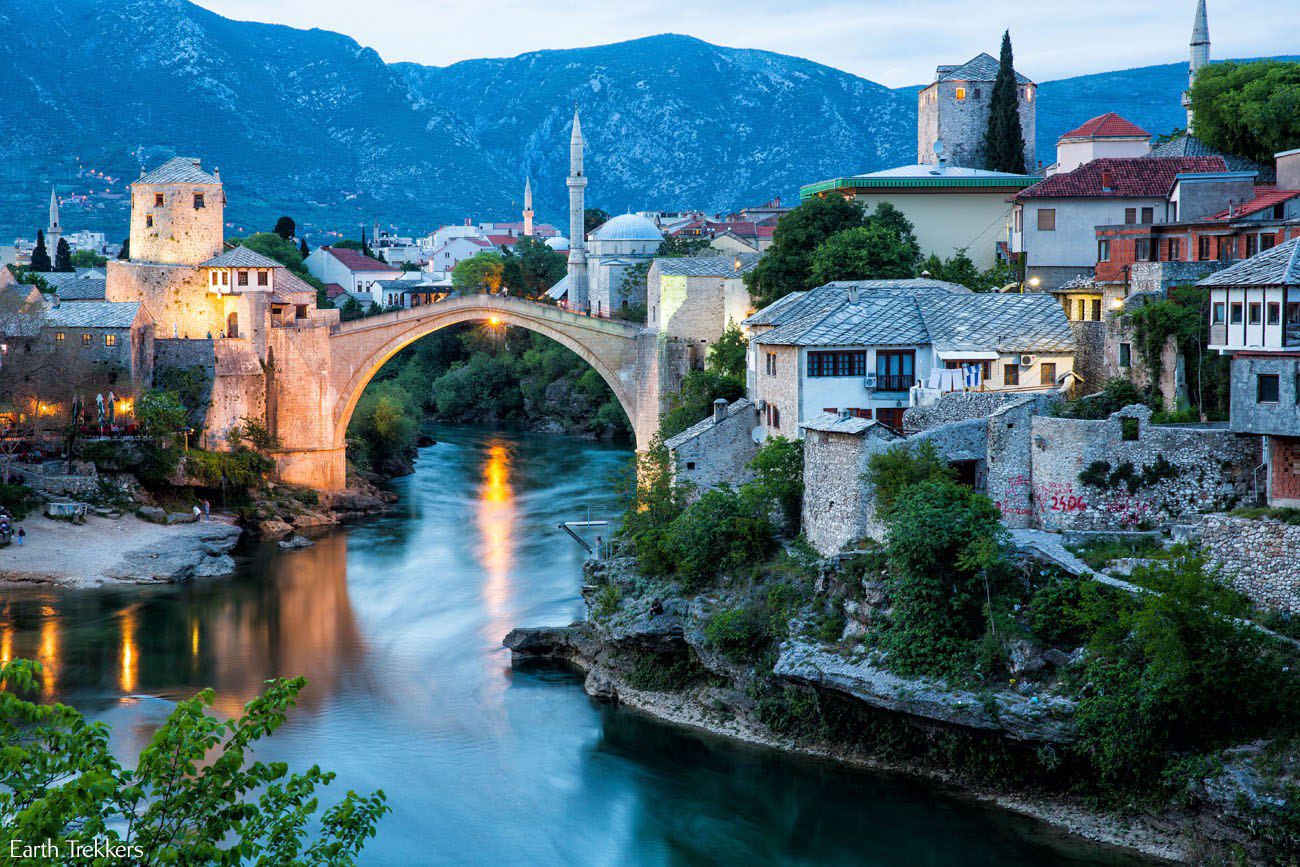
Mostar is a city in southern Bosnia and Herzegovina, straddling the Neretva River. It’s known for the iconic Stari Most (Old Bridge), a reconstructed medieval arched bridge. The nearby alleys are full of shops and market stalls, and the Old Bridge Museum explores the bridge’s long history. A narrow staircase leads up to the Koski Mehmed-Pasha Mosque’s minaret for panoramic city views. he world-famous Stari Most (Old Bridge) is Mostar's indisputable visual focus. Its pale stone arch magnificently throws back the golden glow of sunset or the tasteful night-time floodlighting. The bridge's swooping stone arch was originally built between 1557 and 1566 on the orders of Suleyman the Magnificent.
|
|
| Day 18 |
Exit to India |
NA |
|
Day 18
|
The final day of your trip, relax and check out from your accommodation in time to reach the airport for your flight back to India!
|
|



















